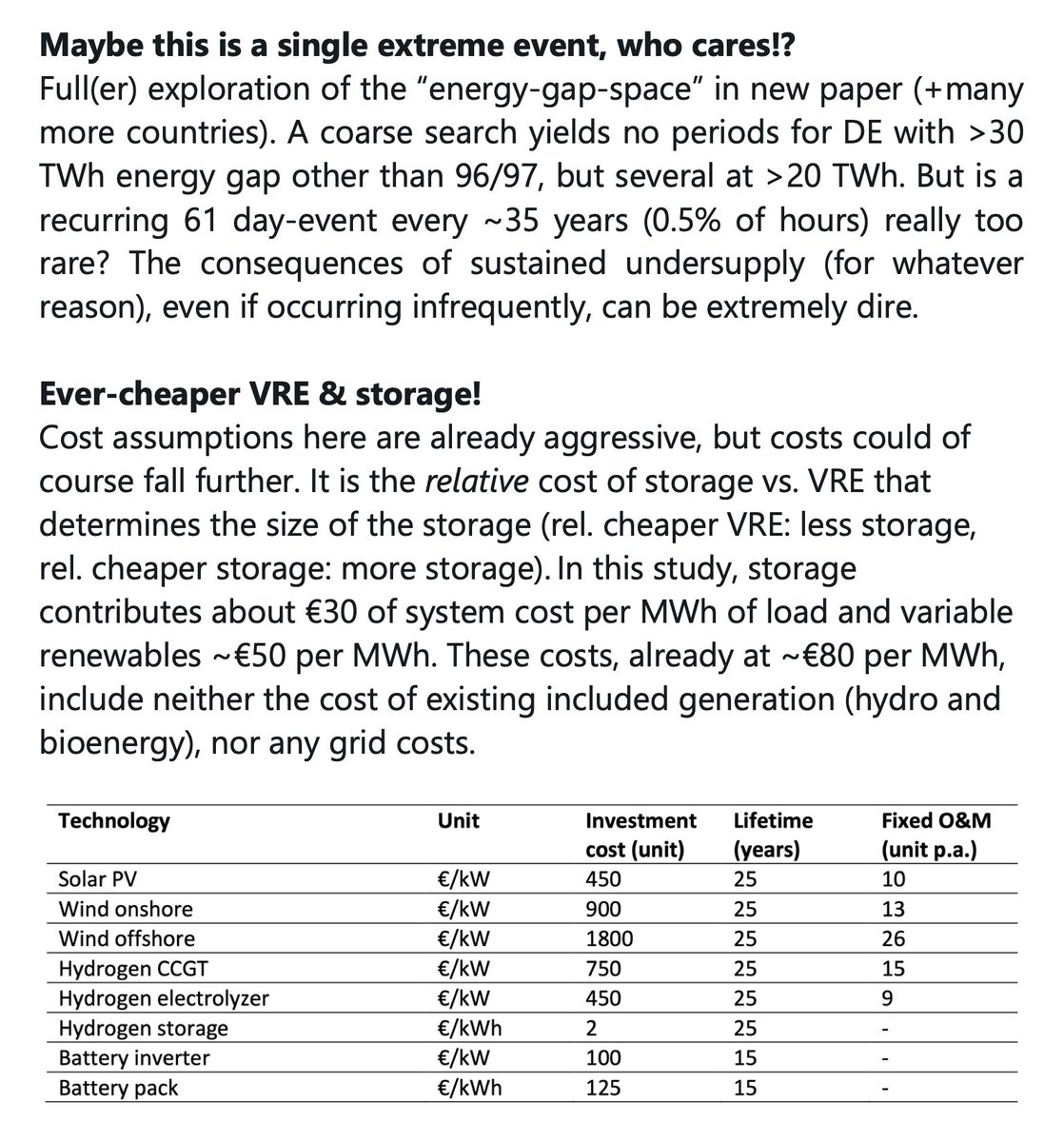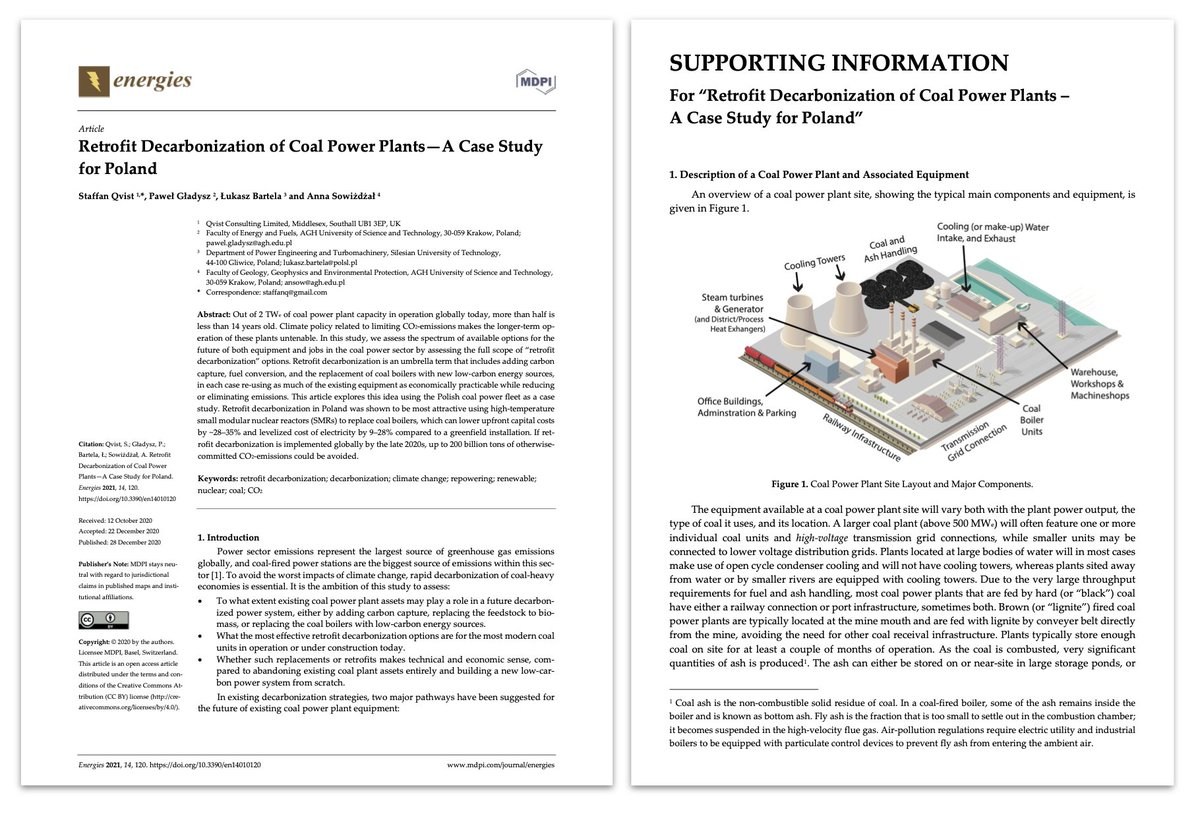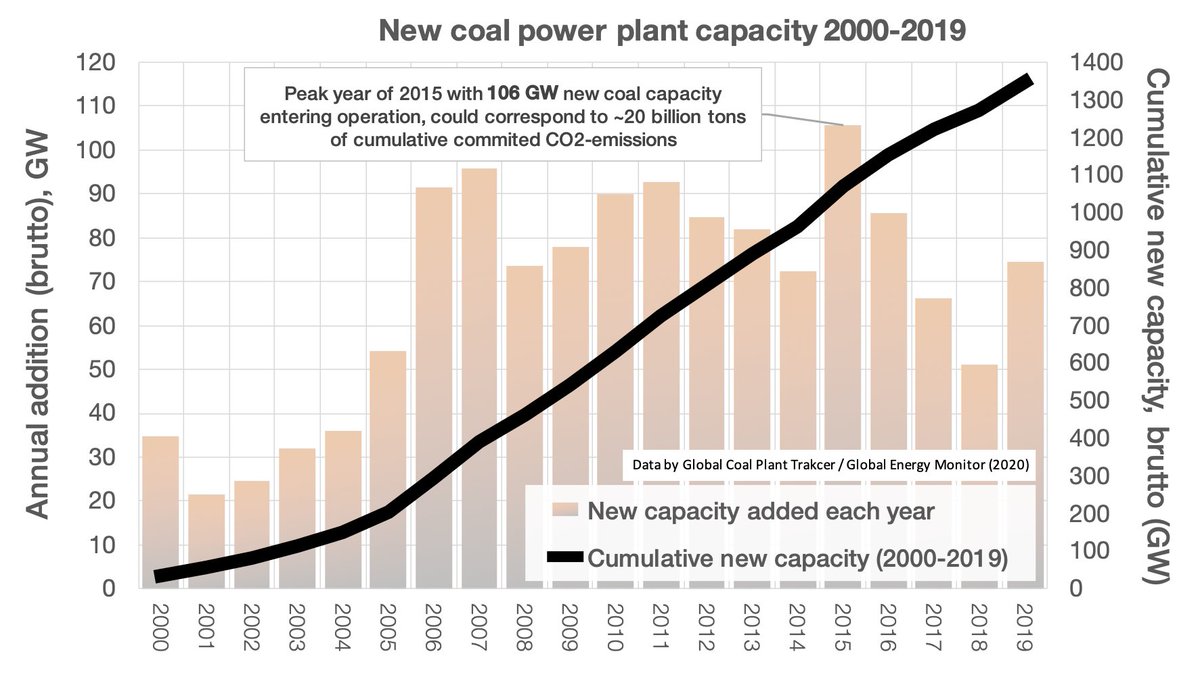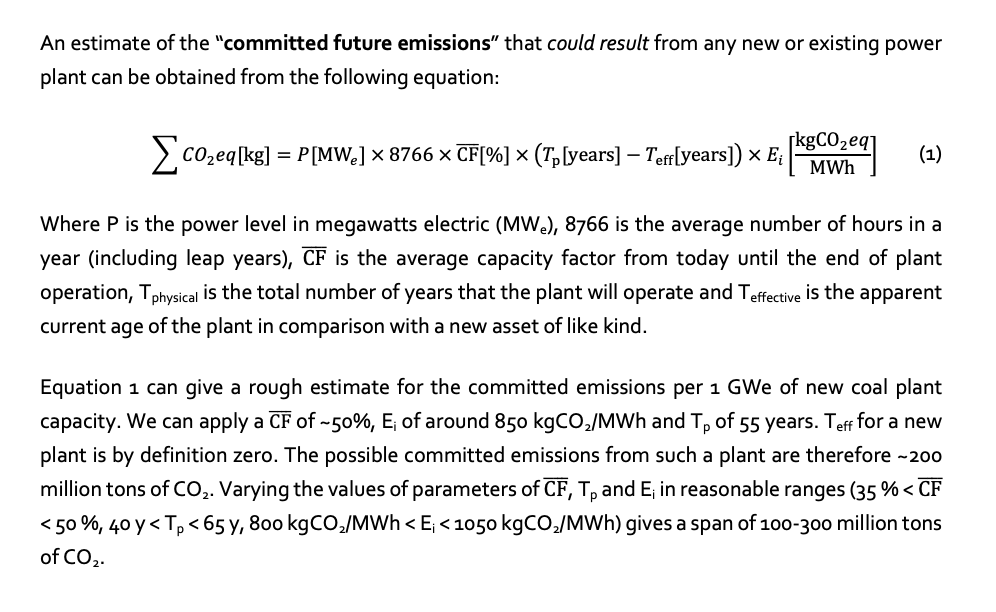
[1] What determines storage requirements in a 100% RE (mainly PV + wind) system, and how much is really needed? @OliverRuhnau and I tried to figure this out in a new study using 35 years of hourly weather (re-analysis) data for Germany: bit.ly/2XeaGSV THREAD... 

[2] A cost-optimal 100%-RE German system (92 GW PV, 94+98 GW on+off. wind + existing other RE & storage - ~130% RE gen. annually) needs an effective storage of 𝟑𝟔 𝐓𝐖𝐡 (~24 days of load!), 98% of which via H₂ (56 TWh H₂-capacity incl. CC discharge eff.). WHY so much? --> 

[3] The need is primarily defined by the biggest “energy gap” (=max 𝙞𝙣𝙩𝙚𝙜𝙧𝙖𝙩𝙚𝙙 diff between load and total generation) for a given mix of VRE. We calculated this value and its defining time-duration across 35 years of available hourly data. 

[4] Media discussions & many studies on “Dunkelflaute” typically focus on events from a few days up to 2 weeks of 𝑐𝑜𝑛𝑡𝑖𝑛𝑢𝑜𝑢𝑠 low VRE output. Our analysis shows that the period determining storage reqs. is FAR longer - for Germany its approx. 𝟔𝟏 𝐝𝐚𝐲𝐬 (9 weeks)! 

[5] Why such a (surprisingly) long period? Large “energy-gaps” do not occur across events with continuously low VRE output. Instead, they are longer periods that can contain short periods of high VRE-gen. They can only be identified by letting a computer churn the numbers! 

[6] Why are storage needs so large here? 1. We look across 35 years of hourly data rather than just 1-2 years, and therefore identify the most challenging times. 2. Fossil fuels are not allowed. 3. Germany is treated as an island system and cannot import (more on this later).
[7] Implications? New VRE gen. is complemented by a 72/81 GW charge/discharge (77% of peak load) + 56 TWh H₂+batt.+PHS storage system. The storage component alone adds >€30/MWh to system cost even with aggressive cost assumptions, so total system cost <€100/MWh is unlikely. 

[8] Handling some load peak hours with low-VRE-output is "relatively easy" with batteries/H₂ & demand flex. If you have to burn some fossil, emissions are still quite small. The REALLY hard and costly challenges coming down the line are the lesser-studied long-duration deficits!
[9] This challenge - which can only be identified using really long time-series of data - needs to be considered when assessing the viability and attractiveness of "100% RE" systems versus more technology-inclusive and tech-neutral decarbonization options and strategies.
[10*] OBJECTION! What about: [1] Higher flex in dispatchable RE generation! [2] TRADE with neighbouring countries! [3] Demand-side flexibility! [4] Maybe this is a single extreme event, who cares!? [5] Ever-cheaper VRE & storage! – Let’s (briefly) look at them all... 



[11*] OBJECTION round #2! 1. Just let some fossil cap. sit idle and wait for challenging events instead? 2. Again, no trade and imports in the model! 3. Could EVs help? 4. Why is there VRE curtailment, let’s make H2 with that power instead? 5. Why not peer-reviewed? 







• • •
Missing some Tweet in this thread? You can try to
force a refresh











